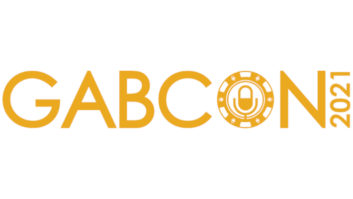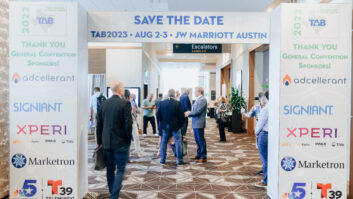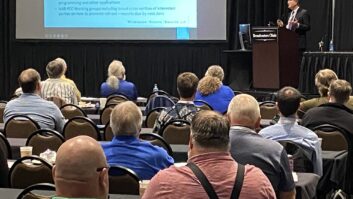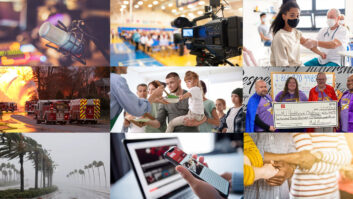Moderator and NAB Senior Director of Advanced Engineering David Layer argues that the connected car offers opportunities for broadcasters as well as competitors in the infotainment system. All 41 cars tested at the recent Detroit Auto Show had AM, FM and SiriusXM with the exception of the BMW i3, which has no AM. Additionally, 78% had HD Radio, while 90% had a volume knob. With that in mind, it’s crucial for broadcasters to know how radio fits into this new environment.
The panel participants were Audi Americas Director of Connected Vehicles Anupam Malhotra, DTS SVP Joe D’Angelo, NPR Mobile Operations Director Demian Perry and NAB EVP and CTO Sam Matheny.

Malhotra says he has seen connected vehicle industry grow from its infancy to “puberty.” Nonetheless, it is one of the most important indicators to consumers about the level of innovation from an automaker. Malhotra says radio and cars have a good thing going — and it’s going to continue because of audio listening’s dominance in cars. The dashboard has evolved from simplicity to the relative complexity of today. The vehicle dashboard is a reflection of the lives we lead today.
He added that HD Radio and satellite radio both essentially owe their growth and continued existence to the auto industry because carmakers “push it.” Auto makers want to give customers all the options in an easy-to-use interface, with flexibility in content and maybe even timing; these priorities have not changed but implementation has evolved. A future Audi vehicle will not have buttons — targeting the millennial generation, which is comfortable with haptic feedback and voice controls. Connectivity, electrification, shared mobility and automation are what Audi and Malhotra perceive as the key automotive trends that will influence car buying — and broadcasters.
D’Angelo advised OTA radio broadcasters to “leverage what’s available in the car today and plan for the connected future” in order to maintain radio’s dominance. HD Radio is now available in over 41.7% of vehicles in 2016 — almost 40 million receivers in use in cars and out. In the U.S., 2334 stations offer HD Radio, in Mexico it’s 70 stations and Canada now has 12 HD stations on the air. And Canada and Mexico are benefiting from the progress the U.S. has made — launching with richer metadata and media suites. Digital radio has laid the foundation for the connected car, D’Angelo says. To DTS, connected radio now means HD Radio and DAB, with the goal of solving a problem for car companies and radio broadcasters. In North America, DTS is partnering with Tagstation for metadata in the U.S.
NPR’s Demian Perry said radio in the car is not that complicated, so NPR shifted its efforts to move away from the live stream but take advantage of AI and machine learning, while creating a cloud infrastructure. Audi was the first car company to build an app that used NPR’s RSS feeds. Since then, NPR has expanded its cloud infrastructure to support all the features of the NPR One app (in JSON format), and has launched a developer center that eases the integration process. The center offers a “complete toolbox” with designs and workflow suggestions. Before launch, NPR will do a “light design review” — several car companies have already gone through this process. It’s a partnership that has allowed NPR to focus on the user experience and spend more resources on building out the technologies that it can control (CarPlay, Android Auto, etc.).
Matheny of the NAB says that competition in the car is both a threat and an opportunity, depending on how broadcasters react. NAB says broadcasters must leverage technology to “super serve” local communities. It’s not just limited to the vehicle, but must also have a presence on smartphones and other connected devices, according to Matheny. In the short term, broadcasters must leverage HD Radio, RDS, Artist Experience, and then look to the future and understand that the infotainment system decisions are made three to five years before the vehicles reach the marketplace — enabling broadcasters to evolve, not just react.












